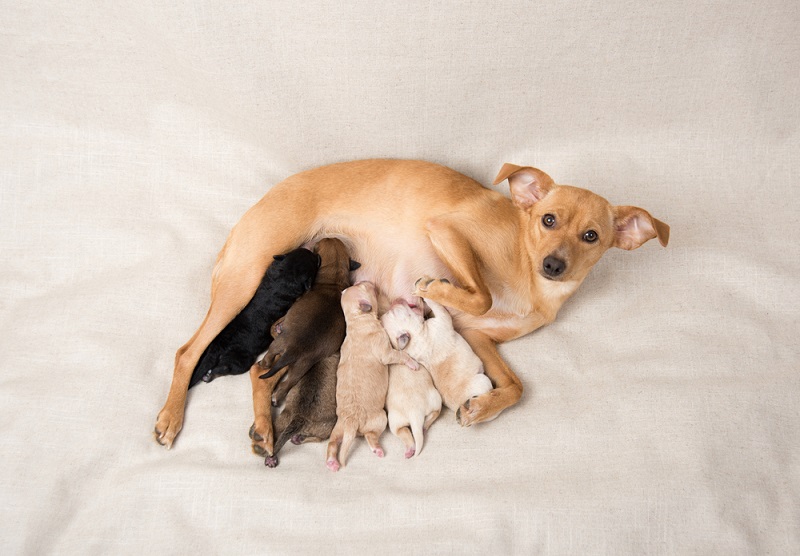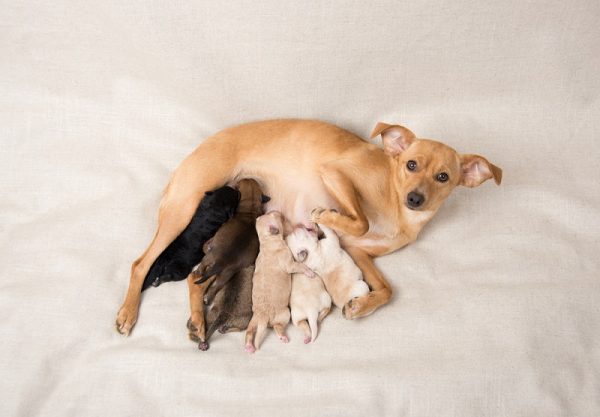There’s nothing like having a full litter of newborn puppies in your home, but if you’re raising puppies right now, you know it’s hard work. Caring for a mother dog and her puppies responsibly is no walk in the park. Luckily, there’s a lot you can do to make the process go easily. A little knowledge goes a long way!
When it comes to weaning, many first-time breeders expect the mom to kick off her puppies and teach them to eat all on her own. But if you want the weaning process to go more smoothly, you can take a more active part in helping your puppies learn to eat solids. Here’s a quick guide to weaning puppies.
Step-By-Step Guide for Weaning Puppies
Weaning puppies off their mother’s milk can be a challenge. So, having some steps to follow can help make the process easier for the puppies and the mother.
1. Start at the Right Time
Puppies should be fully weaned by eight weeks of age, but they’ll start eating food long before then. Most of the time, you’ll want to give your puppies their first food at around three to four weeks.
- First, your puppies’ teeth will start coming in.
- Second, your puppies might show an interest in their mothers’ food (although not all do at this age).
- And third, you might notice the mother becoming more impatient when she’s feeding her pups or your pups acting more frustrated after eating. That’s because the mother is starting to kick her pups off before they’re completely full.
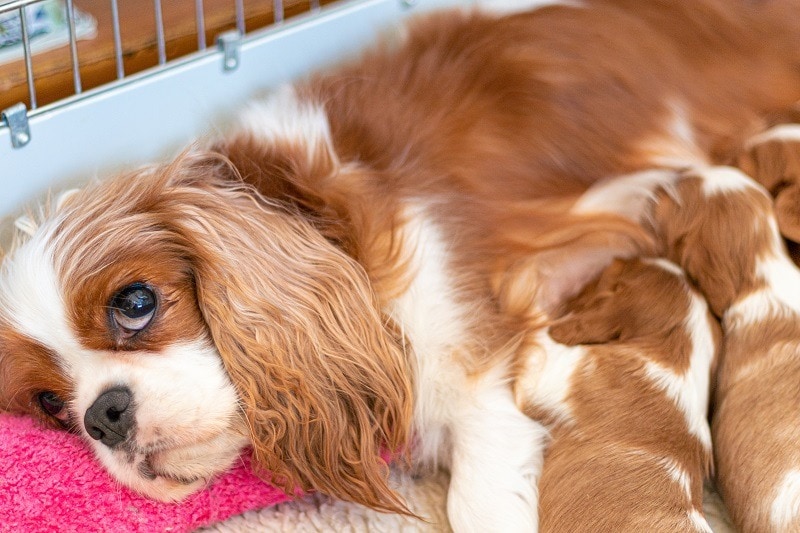
2. Introduce the Food Dish
The best food dish for a puppy this age is a flat, shallow pan. Most breeders start their puppies with thinned-out puppy food right from the start, although some suggest starting with a pan of dog milk replacement or puppy formula. Find something formulated specifically for puppies—cows’ milk, goats’ milk, and baby formula are all likely to make your puppies sick. If it is a large litter you will need to have more than one food dish to make sure all the puppies can access it easily.
3. Choose the Right Food
It is important to choose a food specifically formulated for growing puppies as this will contain the right balance of key nutrients during this period of rapid growth and development. Usually it is best to start with a wet, soft puppy food and thin it out with extra water, so a puppy can easily lap it. You can also soak dry puppy kibble and then blitz in a blender to make it into a wet ‘porridge’ but this is better later in the weaning process. From around a month of age, make sure puppies have access to a shallow dish of fresh water at all times.
4. Let Them Explore
At first, your puppies might not show much interest in whatever’s in their food dish. Give them some time to explore and expect a mess. It’s normal for puppies to walk in their dish before they figure out how to lap from it! If your puppies still don’t seem to understand that they’re supposed to eat, you can try dipping your finger in the food and touching it to your puppy’s mouth. Soon, your puppies will be tasting it for themselves. Offer regular small meals and remove any uneaten food after 15 minutes.
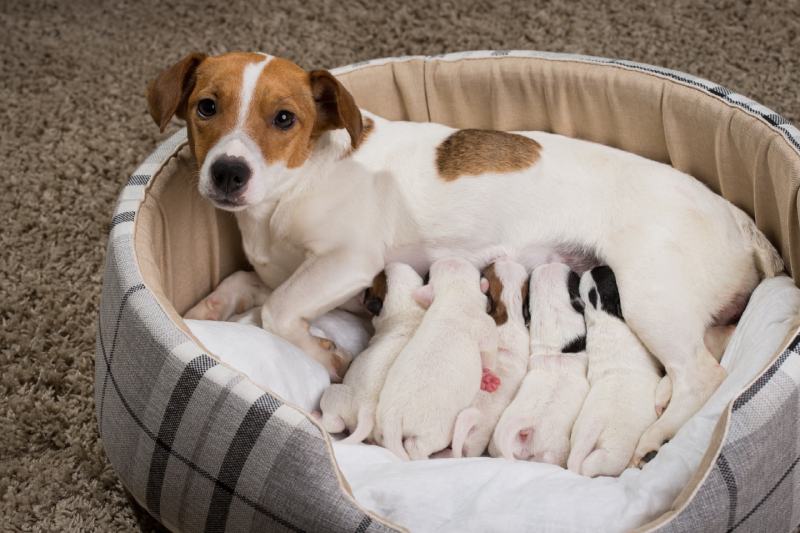
5. Gradually Transition to More Solid Food
As your puppies get better at eating, you’ll want to feed them larger meals. You’ll also want to increase the ratio of solids to liquid in their meals. Over time, your puppies should be eating more and more food from you and spending less time nursing. Always follow the feeding guidelines of the puppy food. By the time your puppies are eight to ten weeks old, they should be eating puppy food straight from the can (or bag) and be fully weaned. You’ll need to feed them about four meals a day at this point—as they grow up, that can transition down to two.
6. Weigh the Puppies Regularly
As you transition, weigh your puppies regularly. Although the exact weight gain speed depends on the breed, puppies should be steadily gaining weight from when they are a few days old. If at any point in the weaning process your puppies’ weight gain is stalling, slow down and make sure they have more access to their mother. Contact your vet if you have any concerns or questions.
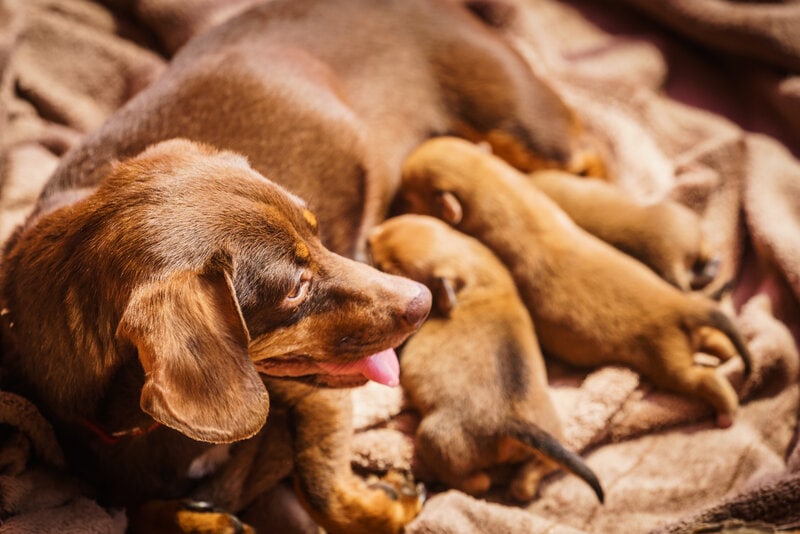
Conclusion
Being a “puppy parent” is a big responsibility. You have to balance the needs of a whole family of dogs and help them transition from being fully dependent on their mother to be ready for adoption. Weaning is a big—and messy—part of that process, but seeing your puppies digging into a bowl of food is a great reward.
Featured Image credit: Anna Hoychuk, Shutterstock

